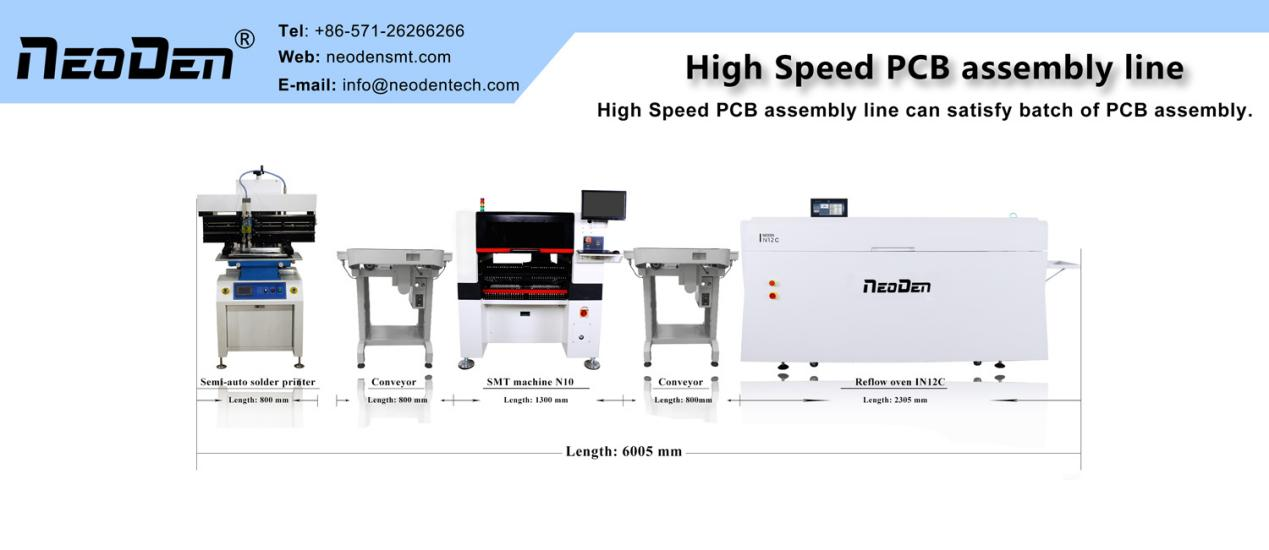The difference between laser welding and reflow soldering
Introduction to Reflow Oven
The most obvious difference between reflow soldering machine and traditional wave soldering machine is that in traditional wave soldering the lower part of the PCB is completely immersed in the liquid solder, while in reflow soldering only some specific areas are in contact with the solder. During the soldering process, the position of the solder head is fixed and the PCB is driven in all directions by a robot. Flux must also be pre-applied before soldering. Compared to wave soldering, flux is only applied to the lower part of the PCB to be soldered, not the entire PCB.
Reflow soldering uses a pattern of applying flux first, then preheating the board/activating the flux, and then using a soldering nozzle for soldering. The traditional manual soldering iron requires point-to-point soldering of each point of the board, so there are more soldering operators. Wave soldering is an industrialized mass production mode, where different sizes of soldering nozzles can be used for batch soldering, and the soldering efficiency is usually several dozen times higher than manual soldering (depending on the specific board design). Thanks to the small programmable mobile soldering cylinders and various flexible soldering nozzles (the capacity of the cylinders is about 11 kg), it is possible to program the soldering to avoid certain parts of the board such as fixing screws and reinforcements, which can be damaged by contact with the high temperature solder. This mode of soldering eliminates the need for custom soldering trays, etc., and is ideal for multi-variety, low-volume production methods.
In the soldering of through-hole component boards, reflow soldering offers the following advantages.
High productivity in soldering and a high degree of automation in soldering
Precise control of flux injection position and volume, microwave peak height, and soldering position
Nitrogen protection of the microwave peak surface; optimization of process parameters for each solder joint
Quick change of nozzles of different sizes
Combined technology for spot welding of individual joints and sequential row welding of through-hole connector pins
Fat” and “thin” joint shapes can be set according to requirements
Various preheat modules (infrared, hot air) and additional preheat modules on top of the board are available
Maintenance-free electromagnetic pump
The choice of construction materials is perfectly suited for lead-free solder applications
Modular construction design reduces maintenance time
Introduction to laser welding
The light source for green laser welding is a laser light emitting diode, which is focused precisely on the solder joint by an optical system. The advantage of laser welding is that the energy required for welding can be precisely controlled and optimized. It is suitable for selective reflow processes or for connectors with solder wire. In the case of SMD components, the solder paste is first applied and then soldered. The soldering process is divided into two steps: First the paste is heated and the solder joint is preheated. The solder paste is then completely melted and the solder completely wets the pad, resulting in a solder. The use of laser generators and optical focusing components welding, high energy density, high efficiency of heat transfer, non-contact welding, solder can be solder paste or wire, especially suitable for welding small space solder joints or small solder joints small power, saving energy.
Laser welding features.
Multi-axis servo motor board control, high positioning accuracy
Laser spot is small, with obvious welding advantages on small size pads and pitch devices
Non-contact welding, no mechanical stress, electrostatic risk
No dross, less flux waste, low production cost
Various types of products that can be soldered
Many choices of solder
Laser welding advantages.
The “traditional process” is no longer applicable to ultra-fine electronic substrates and multilayer electrical assemblies, which has led to rapid technological progress. The processing of ultra-small parts that are not suitable for the traditional soldering iron method is finally accomplished by laser welding. The biggest advantage of laser welding is that it is “non-contact welding”. There is no need to touch the substrate or the electronic components at all, and providing solder by laser light alone does not cause physical burdens. Effective heating with a blue laser beam is also a major advantage, as it can be used to irradiate narrow areas that are inaccessible to the soldering iron tip and to change angles when there is no distance between adjacent components in a dense assembly. While soldering iron tips need to be replaced regularly, laser soldering requires very few replacement parts and low maintenance costs.
Brief Introduction of NeoDen IN12C
IN12C is a new environmentally friendly, stable performance intelligent automatic orbital reflow soldering. This reflow solder adopts the exclusive patented design of “even temperature heating plate” design, with excellent soldering performance; with 12 temperature zones compact design, lightweight and compact; to achieve intelligent temperature control, with high-sensitivity temperature sensor, with stable temperature in the furnace, the characteristics of small horizontal temperature difference; while using Japan NSK hot air motor bearings and Switzerland imported Heating wire, durable and stable performance. And through the CE certification, to provide authoritative quality assurance.

Media Contact
Company Name: Zhejiang Neoden Technology Co., Ltd.
Email: Send Email
Phone: 86-18167133317
Country: China
Website: https://www.smtneoden.com/


